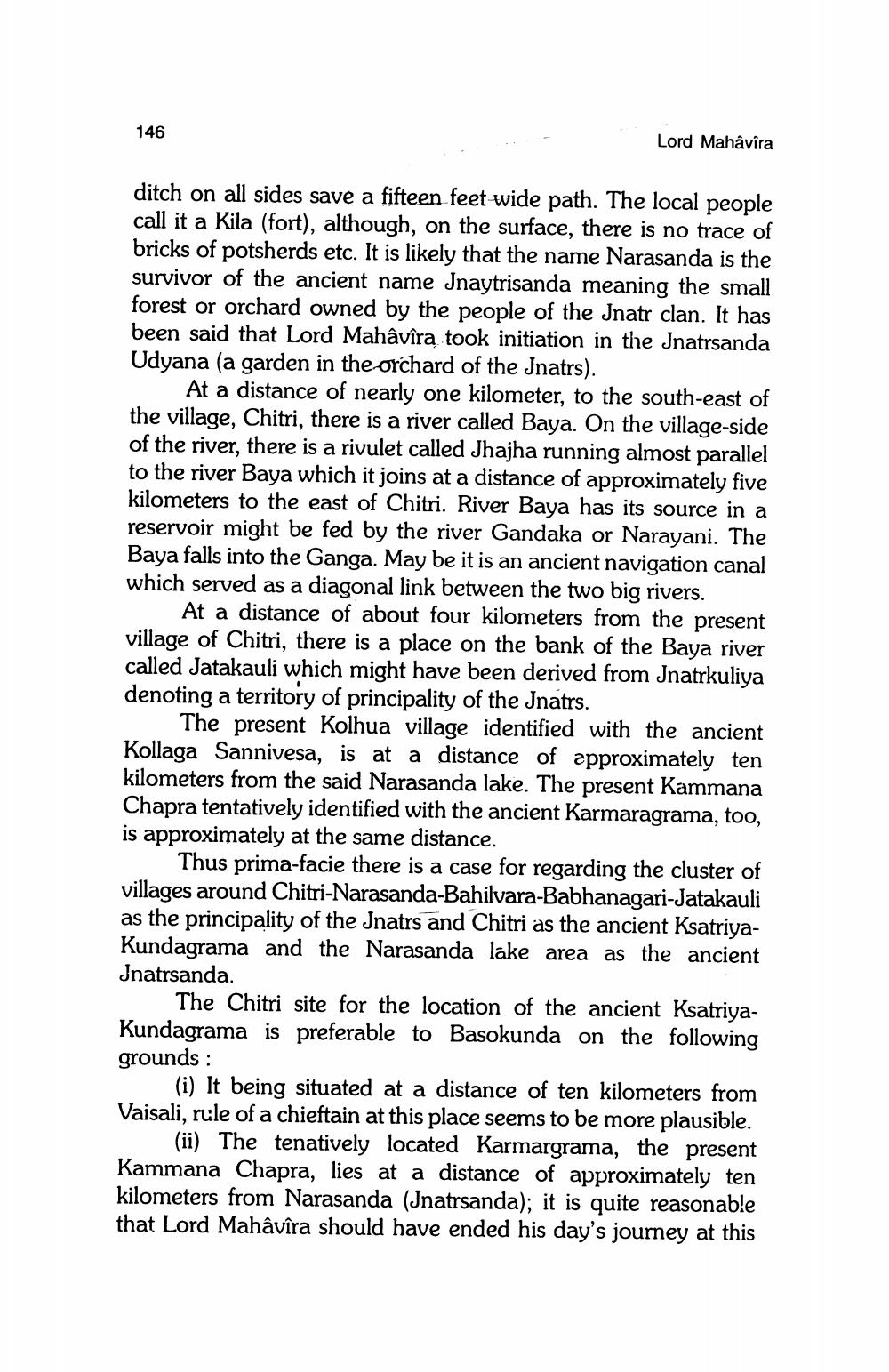________________
146
Lord Mahavira
ditch on all sides save a fifteen feet wide path. The local people call it a Kila (fort), although, on the surface, there is no trace of bricks of potsherds etc. It is likely that the name Narasanda is the survivor of the ancient name Jnaytrisanda meaning the small forest or orchard owned by the people of the Jnatr clan. It has been said that Lord Mahavira took initiation in the Jnatrsanda Udyana (a garden in the orchard of the Jnatrs).
At a distance of nearly one kilometer, to the south-east of the village, Chitri, there is a river called Baya. On the village-side of the river, there is a rivulet called Jhajha running almost parallel to the river Baya which it joins at a distance of approximately five kilometers to the east of Chitri. River Baya has its source in a reservoir might be fed by the river Gandaka or Narayani. The Baya falls into the Ganga. May be it is an ancient navigation canal which served as a diagonal link between the two big rivers.
At a distance of about four kilometers from the present village of Chitri, there is a place on the bank of the Baya river called Jatakauli which might have been derived from Jnatrkuliya denoting a territory of principality of the Jnatrs.
The present Kolhua village identified with the ancient Kollaga Sannivesa, is at a distance of approximately ten kilometers from the said Narasanda lake. The present Kammana Chapra tentatively identified with the ancient Karmaragrama, too, is approximately at the same distance.
Thus prima-facie there is a case for regarding the cluster of villages around Chitri-Narasanda-Bahilvara-Babhanagari-Jatakauli as the principality of the Jnatrs and Chitri as the ancient KsatriyaKundagrama and the Narasanda lake area as the ancient Jnatrsanda.
The Chitri site for the location of the ancient KsatriyaKundagrama is preferable to Basokunda on the following grounds :
(i) It being situated at a distance of ten kilometers from Vaisali, rule of a chieftain at this place seems to be more plausible.
(ii) The tenatively located Karmargrama, the present Kammana Chapra, lies at a distance of approximately ten kilometers from Narasanda (Jnatrsanda); it is quite reasonable that Lord Mahâvîra should have ended his day's journey at this




